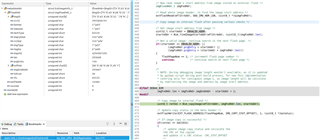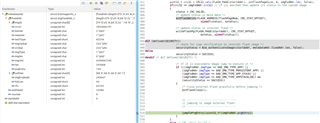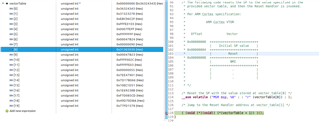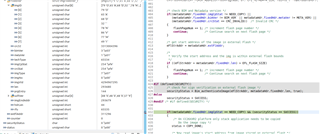Tool/software:
Dear all,
I think I am almost there. I use my external memory to receive my OAD image.
The image is received, CRC calculated OK, everything seems to work fine.
However, my BIM does not seem able to boot such properly downloaded image. Please see the following screenshot with debugger watched variables.
As you can see, it checks OK all conditions.

Do you see something that immediately appears as wrong?
I checked the len of the image and is exaclty 293668 so it is ok.
Maybe flashPageNum or imgFxdHdr->prgEntry?
Please let me know any suggestion and have a nice day.





